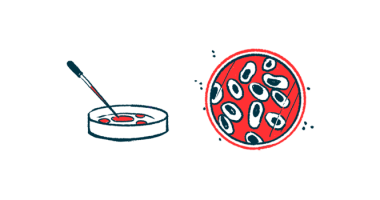Scientists develop human model of blood-brain barrier
'Game-changing’ model has potential for neuroscience, medicine

In a first-of-its-kind development, a team of scientists created a lab model of the blood-brain barrier (BBB) surrounding the brain.
The new model represents “a game-changing technology with broad implications for neuroscience, drug discovery, and personalized medicine,” Ziyuan Guo, PhD, assistant professor at the University of Cincinnati department of pediatrics and co-author of the study, said in a Cincinnati Children’s Hospital Medical Center press release.
The BBB acts like a bouncer for the brain, carefully controlling which substances from the blood are able to enter into the brain and which are excluded. This can be vital for protecting the brain from dangerous chemicals and infections, but it also poses a major obstacle for the development of medications that aim to target the brain.
Development of the model was described in Cell Stem Cell, in a study titled, “Modeling blood-brain barrier formation and cerebral cavernous malformations in human PSC-derived organoids.”
Even though the importance of the BBB is well known, until now there hasn’t been a good in vitro model (that is, a model using cells grown in a dish in a lab) to study the BBB. With the new model, researchers will have a tool that can be used to help develop treatments for Parkinson’s disease and a range of other neurological disorders.
Breakthrough overcomes ‘major hurdle’ to neurological research
“Lack of an authentic human BBB model has been a major hurdle in studying neurological diseases,” Guo said. “Our breakthrough involves the generation of human BBB organoids from human pluripotent stem cells, mimicking human neurovascular development to produce a faithful representation of the barrier in growing, functioning brain tissue.”
Having a human cell model of the BBB “is an important advance because animal models we currently use in research do not accurately reflect human brain development and BBB functionality,” Guo said.
Traditional in vitro cell models involve growing cells in a flat dish. In recent years, many researchers have worked to develop organoids — lab models where cells are grown in a three-dimensional architecture that more closely resembles how the cells would be organized in people.
To create the model, the researchers built on previous efforts to create organoids of the brain or of blood vessels. Essentially, they created both brain and blood vessel organoids, then grew them together so they could form brain blood vessels with a functional BBB.
The team dubbed these organoid combinations “BBB assembloids.” They said this model “provides a unique system for delineating the intricate interplay between vascular factors and neurological diseases.”
The team conducted a comprehensive battery of tests demonstrating that the BBB seen in their model shows biochemical features comparable to what’s seen in the human BBB, suggesting the model could be a useful basis for studies of the BBB. The scientists noted, however, that the model remains an imperfect picture of the human brain: For example, it doesn’t include brain-residing immune cells or connections out to the rest of the body.
“Through stem cell bioengineering, we have developed an innovative platform based on human stem cells that allows us to study the intricate mechanisms governing BBB function and dysfunction,” Guo said. “This provides unprecedented opportunities for drug discovery and therapeutic intervention.”
As a proof-of-concept for how the model might be useful, the researchers generated BBB assembloids using stem cells from people with cerebral cavernous malformation, a brain disorder characterized by blood vessel abnormalities. The team showed the assembloid model captured many of the molecular features seen in people with the disease, again supporting its potential use as a platform for studies.
“Our model accurately recapitulated the disease phenotype, offering new insights into the underlying molecular and cellular pathology of cerebral vascular disorders,” Guo said.







